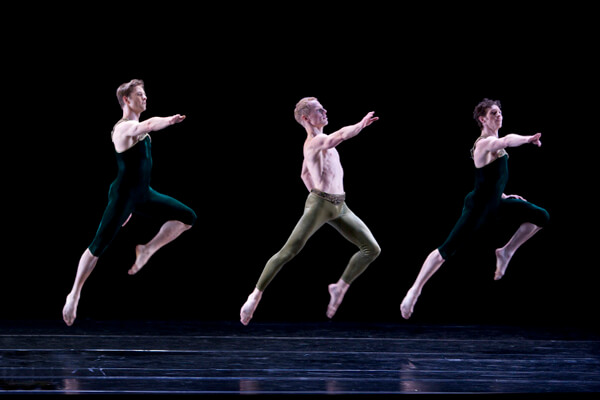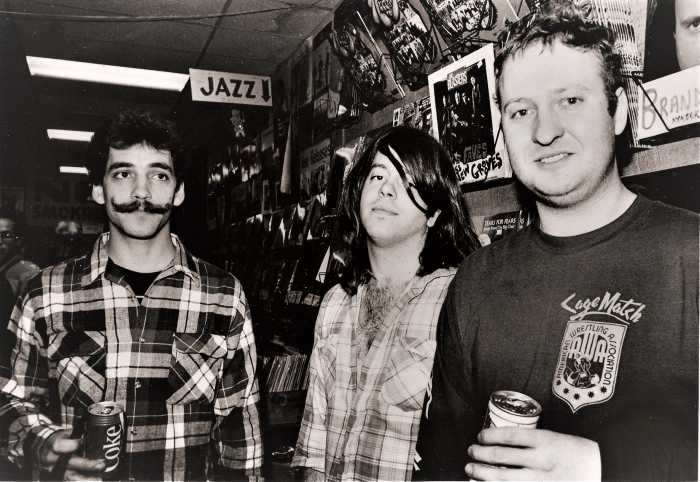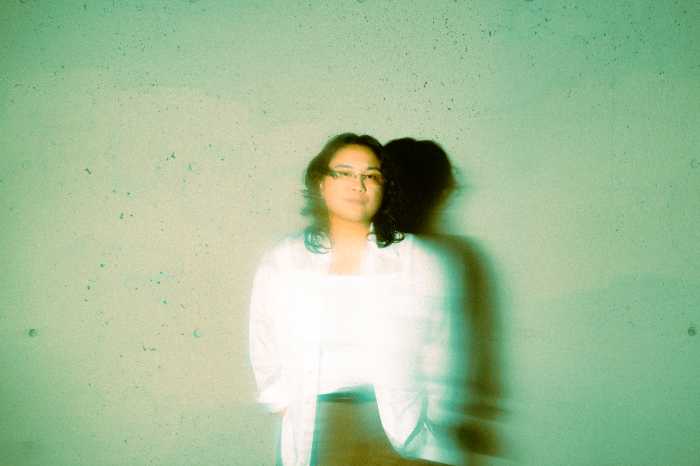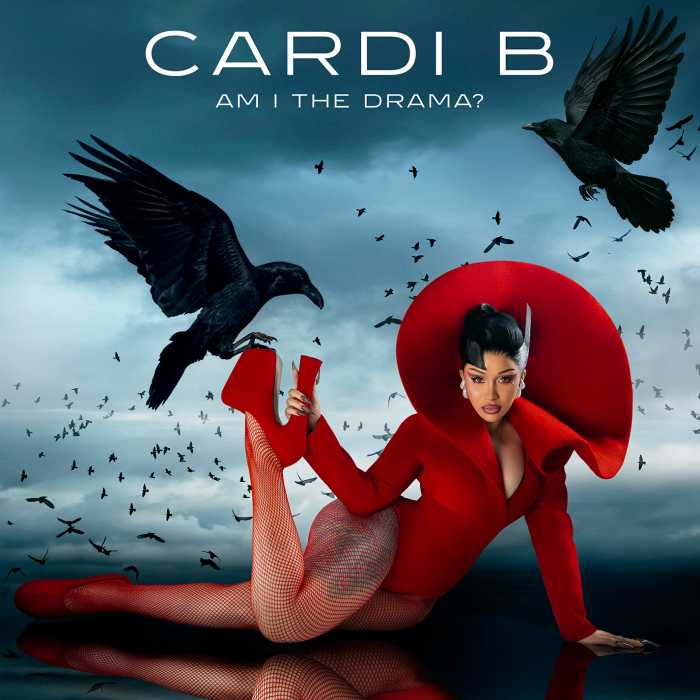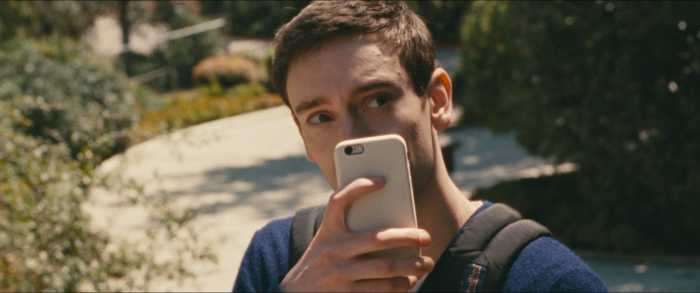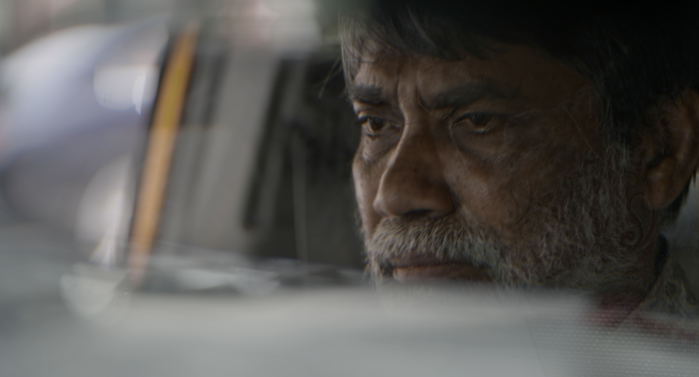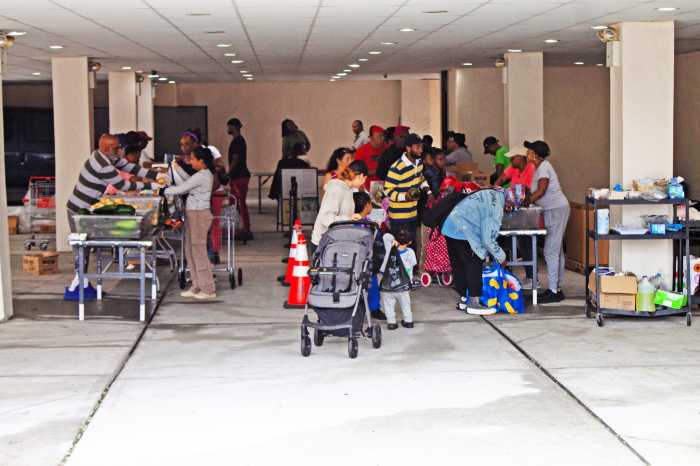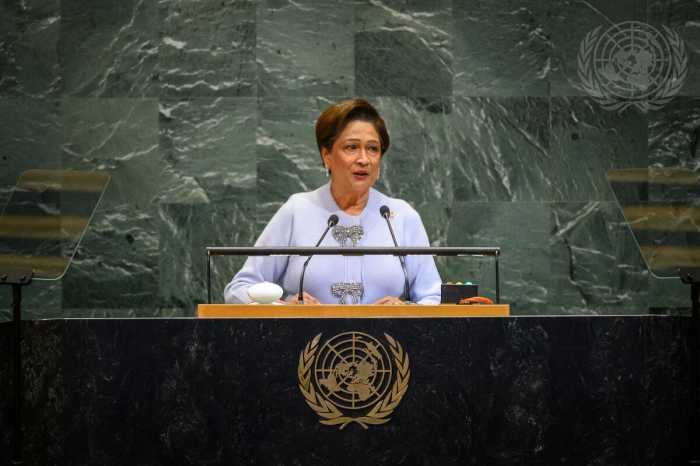James Samson, Michael Trusnovec, and Sean Mahoney in Paul Taylor Dance's “Brandenburgs.” | PAUL B. GOODE
Paul Taylor’s second spring season at Lincoln Center offers the usual abundance of dances by the 20th century master. Having moved from its former stage, City Center, to the grander Koch Theater, the company looks entirely at home. Taylor is perhaps the last remaining mid-century modern dance master, and he still turns out two new dances a season to add to his already copious repertory.
On March 15, the program included the premiere of “Perpetual Dawn,” “Scudorama” (1963), and “Brandenburgs” (1988).
Set to the music of the “Dresden Concerti” by Johann David Heinichen, a Bach contemporary, “Perpetual Dawn” is a five-part suite in Taylor’s romantic mode. Earth-toned peasant dresses, made of beautifully flowing silky fabric, and knee britches and vests for the men by Santo Loquasto, along with his muted landscape backdrop, give “Perpetual Dawn” the look of a faded 18th century painting. James F. Ingalls’ luscious lighting subtly suggests many shades of dawn.
It’s familiar Taylor territory, but no one does this better. Youthful folksiness keeps the occasional longing gesture –– like the one by Michelle Fleet, reaching toward the wings, that closes the first scene –– from coming across as unbearably sentimental.
Paul Taylor Dance at Lincoln Center through March 24
The second scene has five women –– Fleet, Amy Young, Eran Bugge, Laura Halzack, and Heather McGinley –– being womanly, linking hands, rising and falling softly to the floor, perhaps waiting for the evening return of their men from the fields.
The third scene begins with an explosion of couples racing along diagonal paths with skipping leaps and spins. Taylor has not succumbed to the contemporary cliché of having dancers just run to where they need to be, then run off. He knows how to make steps that carry people through space graciously and exuberantly.
The dance calms down briefly for a mimed conversation between Halzack and Young and a delicate duet for Young and Michael Trusnovec. Taylor uses folk dance patterns and little skipping steps. When the dancers do run, it’s like a rhythmic tattoo that both reinforces the music and heightens their emotional intention.
A program quote from Dante about “the nearly soulless/ Whose lives concluded neither blame nor praise” introduces the enigmatic opener, “Scudorama.” Against a backdrop of cartoonish clouds by Alex Katz, a group of mysterious people grovel on the ground, some under blankets. A man in a business suit (Sean Mahoney) rises and becomes the protagonist. Surrounded by tormenters, he’s Taylor’s alter ego we might assume. His counterpart is a temptress in red (Halzack.)
Choreographically, the movement in the 1963 dance is very close to that of Martha Graham, whose company Taylor had then recently performed with. Parisa Khobdeh, Jamie Rae Walker, and Fleet are three harpies in black, whose bent-legged jumping, hinging into sweeping falls and recoveries, and fast-footed skittering recall any number of Graham’s female choruses. This odd mix of humans and gremlins seem more dreamlike than real, and Clarence Jackson’s original score, which sounds like dramatic movie music, reinforces the impression. At the end, six figures under blankets shamble into a cluster where once the humans had been but are no longer.
The first three movements of Bach’s “Brandenburg Concerto #6” propel “Brandenburgs.” The cast of nine includes a corps of five men in black velveteen tights with bibs (Mahoney, Robert Kleinendorst, James Samson, Michael Apuzzo, and George Smallwood), three paramours in black gowns (Young, Khobdeh, and Bugge), and a bare-chested Adonis in velvety gray tights (Trusnovec.)
This lyric exposition –– illustrative of one of Taylor’s most affable genres –– is physically exuberant as well as wryly satiric. Vigorous passages by the men alternate with successive duets for Trusnovec and each of the ladies. When he’s not partnering the women with gallant attention, he poses adjacent to each, like a male paragon, watching them dance. In a quartet, he partners them all, making each one feel special.
No one wears physical beauty with more modesty than Trusnovec, which makes his role here so irresistible. In the opening picture, he kneels, center stage, amidst the women with the other men arrayed at the sides –– a classical ballet tableau. In the latter passages, he leads the men, proving that he’s more than just a pretty boy –– he’s a dancing machine with flawless musicality and a physical ease that lacks not for dynamic accents when needed.
Taylor’s dancers are athletic-looking, and their dancing is muscular, fluid, and expansive. If in the lyric pieces some of the women seem to smile excessively, they can be forgiven. What they’re doing looks like a blast.
PAUL TAYLOR DANCE COMPANY | Koch Theater, 20 Lincoln Center Plaza | Mar. 19-21 at 7 p.m.; Mar. 22-23 at 8 p.m.; Mar. 23-24 at 3 p.m. | $10-$160 at lc.lincolncenter.org

